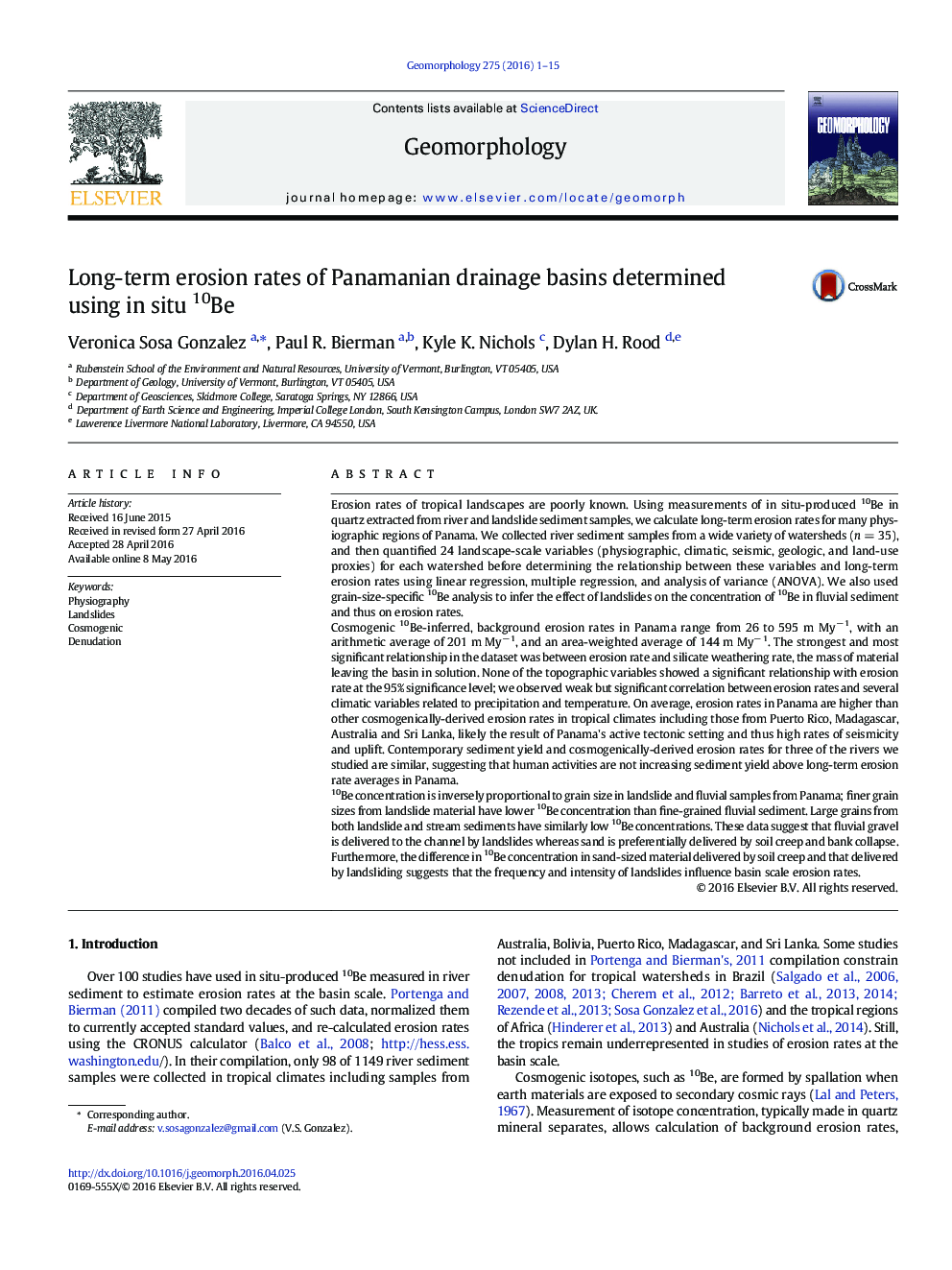| کد مقاله | کد نشریه | سال انتشار | مقاله انگلیسی | نسخه تمام متن |
|---|---|---|---|---|
| 4683874 | 1635374 | 2016 | 15 صفحه PDF | دانلود رایگان |

• Compared to published tropical denudation rates, Panama is eroding faster.
• Topography and erosion are not correlated in the watersheds we analyzed.
• Faster erosion rates are found in areas with higher seismic activity.
• Long-term erosion rates are similar to contemporary sediment yields.
• Bedload is delivered mostly by landslides.
Erosion rates of tropical landscapes are poorly known. Using measurements of in situ-produced 10Be in quartz extracted from river and landslide sediment samples, we calculate long-term erosion rates for many physiographic regions of Panama. We collected river sediment samples from a wide variety of watersheds (n = 35), and then quantified 24 landscape-scale variables (physiographic, climatic, seismic, geologic, and land-use proxies) for each watershed before determining the relationship between these variables and long-term erosion rates using linear regression, multiple regression, and analysis of variance (ANOVA). We also used grain-size-specific 10Be analysis to infer the effect of landslides on the concentration of 10Be in fluvial sediment and thus on erosion rates.Cosmogenic 10Be-inferred, background erosion rates in Panama range from 26 to 595 m My− 1, with an arithmetic average of 201 m My− 1, and an area-weighted average of 144 m My− 1. The strongest and most significant relationship in the dataset was between erosion rate and silicate weathering rate, the mass of material leaving the basin in solution. None of the topographic variables showed a significant relationship with erosion rate at the 95% significance level; we observed weak but significant correlation between erosion rates and several climatic variables related to precipitation and temperature. On average, erosion rates in Panama are higher than other cosmogenically-derived erosion rates in tropical climates including those from Puerto Rico, Madagascar, Australia and Sri Lanka, likely the result of Panama's active tectonic setting and thus high rates of seismicity and uplift. Contemporary sediment yield and cosmogenically-derived erosion rates for three of the rivers we studied are similar, suggesting that human activities are not increasing sediment yield above long-term erosion rate averages in Panama.10Be concentration is inversely proportional to grain size in landslide and fluvial samples from Panama; finer grain sizes from landslide material have lower 10Be concentration than fine-grained fluvial sediment. Large grains from both landslide and stream sediments have similarly low 10Be concentrations. These data suggest that fluvial gravel is delivered to the channel by landslides whereas sand is preferentially delivered by soil creep and bank collapse. Furthermore, the difference in 10Be concentration in sand-sized material delivered by soil creep and that delivered by landsliding suggests that the frequency and intensity of landslides influence basin scale erosion rates.
Journal: Geomorphology - Volume 275, 15 December 2016, Pages 1–15